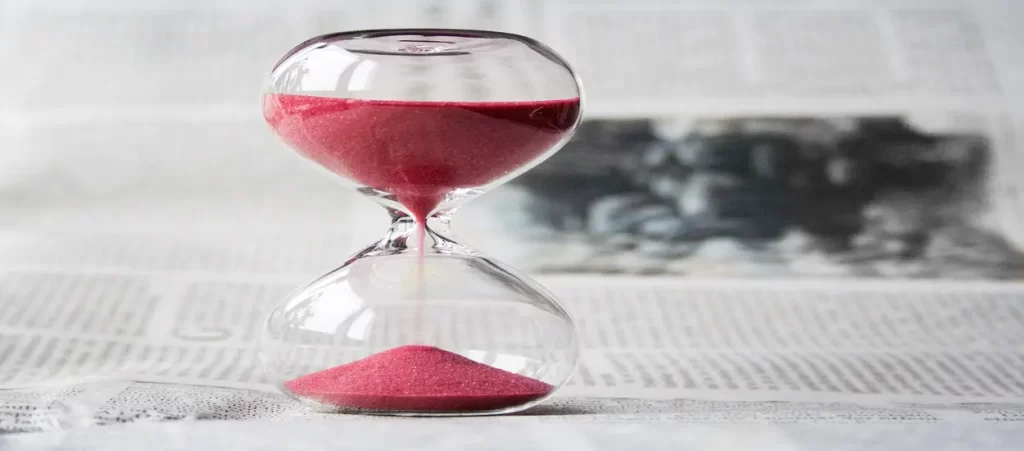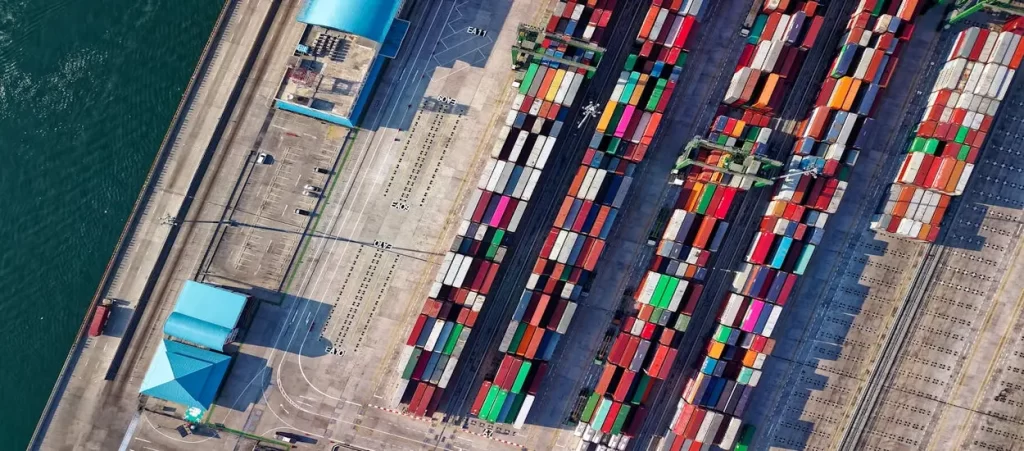Want to do your new product development in an affordable country? It can be incredibly profitable and still a bit challenging without proper guidance. Our expert guide is here to help, whether you’re a beginner or learning to improve your sourcing process.
We will show you how to create and produce a new product in China from start to finish. Top-quality production is possible. It’s not that hard; keep reading to be well-prepared!
Why Develop and Manufacture in China?

China is responsible for 31.6% of the total world manufacturing output. Did you know that? China is famous for its production, raw materials, and skilled workers. This combination allows for reduced costs without compromising quality.
Labor and material costs in China are lower than in many Western countries. Currently, Beijing has the highest minimum wage at about $3.70 U.S. per hour. In other parts of China, it is even lower.
Working with Chinese suppliers can cut your production costs. You can still maintain high standards.
China’s affordable labor and materials are advantages for product development. It is also high-tech, especially in electronics, textiles, and plastics.
Key Considerations Before Starting Product Development
The benefits are tempting. But don’t assume and rush to adopt China’s manufacturing process. Ask yourself the following:
- What type of product am I developing? Knowing your product’s materials and processes will help you find a manufacturer in China.
- What are your market demands? Conduct market research to ensure there’s a demand for your product.
- Am I ready to invest in China sourcing and product development services? Developing prototypes, sourcing materials, and setting up production need upfront investments. Make sure your budget aligns with your production goals.
Manufacturing Products & Parts in China
If the right steps are taken, your product idea will be easily seen in China. Whether you have production-ready specifications in detail and a partner with an experienced sourcing agent who can find a perfect match for a manufacturer able to negotiate the best terms and organize quality inspections before shipment success depends on it.
How do you manufacture a new product in China?
Owlsourcing specializes in bringing your unique ideas into reality. Being one of the leading custom product development companies, we guide customers through each stage, from concept and design to manufacturing and delivery.
Our team will materialize your vision with precision and efficiency by leveraging deep expertise in sourcing, prototyping, quality control, and logistics.
Be it a new product line or an extension of an existing one, Owlsourcing offers customized solutions to meet your objectives while maintaining the highest standards of quality and professionalism. For more information Contact Us.
Step 1: Product Conceptualization and Design
- Start with clear and comprehensive designs to identify potential issues and ensure market viability.
- Use CAD software for precise, 3D designs and prototyping services to test and refine the product.
- Prototyping bridges design and manufacturing, ensuring quality before full-scale production.
- Highlight the importance of custom product manufacturing in aligning the design with market needs.
Product Design and Prototyping with Chinese Factories

You must know how to make a prototype in China. Before you can start manufacturing in China, you’ll need a solid design and a working prototype.
A prototype helps you check your product’s design and usability. Do this before full-scale manufacturing.
Many manufacturers offer product development services that include prototyping. At this stage, work with the manufacturers to create and refine prototypes. Ensure that the prototype performs as expected in real-world scenarios.
It can reveal design flaws that weren’t observed in the concept stage. Don’t hesitate to iterate on the prototype to create a great product.
Step 2: Protecting Intellectual Property
- Early filing of patent and trademark applications is advisable since China is a first-to-file jurisdiction.
- Utilize NDAs for manufacturers and partners to protect designs and ideas. Make sure NDAs are at least bound by minimum Chinese legal standards so they will be considered enforceable.
- Secure your intellectual property to stay ahead and avoid legal tangles.
- Beware of several potential traps, including delayed registration of IP and other hidden costs.
Understand China’s Regulatory Environment
A crucial part of developing and manufacturing a new product in China is knowing its regulations. Regulations cover everything from product sourcing in China to IP protection.
Many businesses worry about IP theft when manufacturing overseas. It’s normal for you to fear the same. China has improved its IP laws over the years. Still, you should file for patents and trademarks there. It will protect your designs and technologies.
Your product may face specific regulations depending on it.
These rules might cover safety, materials, or environmental concerns. Knowing them early saves time and money.
Also, ensure your product meets all standards and Chinese export regulations. Be aware of any taxes, tariffs, or duties that may apply to your product. Working with local sourcing experts can help you avoid potential issues.
Step 3: Finding the Right Manufacturer in China
You must choose the manufacturer that is the best in China. It impacts your product’s quality, cost, and timing. Here are three effective methods to find a reliable manufacturer.
1) Hire a Sourcing Agent
A sourcing agent is an effective way to find a manufacturer in China. They understand the local market and have connections with reliable factories.
At OwlSourcing, we provide complete sourcing services. We guide you through the development of custom products in China. Our extra services ensure you partner with manufacturers that meet your goals.
It minimizes risks, eliminates communication barriers, and saves you countless hours.
Choosing our team as your sourcing agent means you benefit from our experience. So, let us handle the complexities. Contact us today to start easy manufacturing.
2) Online Marketplaces
Many people look for manufacturers on Alibaba and related Chinese wholesale websites.
These sites let them compare suppliers, prices, and reviews. They are helpful in the early stages of finding suppliers.
Relying only on online platforms has its risks. You may know about Alibaba scams. The many suppliers can be overwhelming. Also, it is tough to verify a factory’s skills and trustworthiness online.
3) Trade Shows

Trade fairs in China offer a chance to meet suppliers face-to-face. They showcase thousands of manufacturers.
You can inspect products, discuss needs with factory reps, and strengthen relationships. Attending the Canton fair offers an opportunity to compare many manufacturers.
Although trade shows are great for hands-on exploration, they consume time for travel.
How to Evaluate Manufacturers?
Check their experience and capabilities. Does the factory have a history of making products like yours? Specialization matters. So, look for manufacturers who are experts in your product category. They should also have relevant certifications.
Also, check the factory’s location for shipping costs and delivery times.
Many wholesale markets in southern China are near significant ports. This proximity aids in efficient product exports.
In contract talks, outline every detail. Include pricing, lead times, quality control, and penalties for delays or defects. It will protect your interests and set clear expectations for both parties.
Step 4: Quality Control for Your New Products in China
It is essential to ensure quality when manufacturing new products in China. Even if you choose a reliable manufacturer, issues can still arise during production. For accuracy, you should do quality control in China in the following three phases.
- Pre-production Quality Control: Always work with your manufacturer to establish quality standards.
- In-process Inspections: These include regular inspections during production to detect defects early.
- Post-production Inspections: Inspect the goods before shipping to confirm they meet your standards. It will save you from receiving defective or non-compliant products later on.
Hire a reliable third-party quality inspection in China to perform these inspections.
- Provide the timeline for pre-production, in-production, and pre-shipping checks for quality assurance.
- Whether it is adherence to Chinese regulations or conformation with international standards, such as ISO certifications or CE marking, for any potential market entry issues that could arise,
- Set a good standard quality control procedure and eliminate various inspection communications barriers.
Step 5: Make a Sample with Your Supplier
- Elaborate on a prototype to see your supplier’s capability and re-develop the product.
- Use the benefits of the prototyping services to agree upon a design and quality.
- Use this phase to resolve problems and confirm custom product manufacturing needs.
Step 6: Negotiation of Terms
- Negotiate price, MOQs, lead times, and payment terms to reach a mutually viable agreement.
- Prepare overall contracts with specifications, quality parameters, timelines, and contingencies.
- Emphasize the insights relevant to industry experience in strengthening the negotiations.
Step 7: Manage Manufacturing and Communication
- Regular communication about manufacturing progress can be done through periodic reports and site visits.
- Be prepared for such risks as supply chain disruptions with contingency plans.
- Use clear channels to resolve any communication barriers.
Step 8: Managing Production Timelines and Costs

Image Source: Pixabay
Once production begins, managing your timelines and costs becomes critical. New product manufacturing in China can be fast-paced, but delays are not uncommon. Set realistic production timelines with your manufacturer.
But be prepared for delays due to holidays like Chinese New Year, which can shut down factories for weeks.
We mentioned that manufacturing costs in China are usually lower. However, unexpected expenses can sometimes add up. So, track material costs, labor rates, and shipping fees to ensure you stay within budget.
Step 9: Shipping and Logistics

Shipping and logistics might seem daunting. But careful management can save you time and money. Sea shipping from China is cheaper for large amounts.
It takes weeks but is best for long distances. Air freight service from China is faster and takes days. It’s pricier but ideal for urgent, high-demand products.
Don’t skip cargo insurance. It protects your investment from shipping losses. Check how to buy shipping insurance when shipping from China. Professional handling of logistics prevents problems and protects your business.
Customs Clearance: After choosing your shipping method, you must clear customs. It involves dealing with tariffs, duties, and regulations. It’s complex, and mistakes can cause delays. Consider working with a good customs broker.
Please refer to the following article for more information on customs clearance in China.
How Long Does it Take to Manufacture & Source Products
If initiating a product from scratch, then the whole process may take roughly 10-12 months. This timeline includes everything from developing the initial idea to shipping the finished product.
For more streamlined projects or readily available items, the timeframe can be significantly shorter.
Key Phases in the Manufacturing and Sourcing Process
1. Concept Development and Design
This stage involves the fine-tuning of your product idea, creating the technical designs, and getting the concept ready for production.
2. Source Supplier
Sourcing the right supplier is paramount. For experienced sourcing agents, this can be hastened by their pre-established networks of suppliers.
3. Production Lead Time
Manufacturing timelines will depend on the product type and its complexity:
- Standard Products (Off-the-Shelf): For readily available items, the process can take as little as 7–30 days, including quality checks and packaging.
- Custom Products: These take longer because they involve design, prototyping, and testing.
- Design and Prototyping: Usually 3–8 weeks.
- Production: 15–60 days, depending on the complexity and size of the order.
4. Quality Control and Testing
Quality can be ensured in products by inspections and testing, which may take 2–5 days, though it might vary concerning the product category.
5. Shipping and Delivery
Shipping times depend upon the method of transport used:
- Air Freight: 5–10 days
- Sea Freight: 2–6 weeks
Average Manufacturing and Shipping Times
If starting with a new product, including sample production and sea freight, the whole process usually takes 3–5 months. This estimate may vary depending on the project’s complexity and scope.
Key Factors Affecting Timelines:
- Material Availability: Delays in sourcing raw materials or components can add weeks to the process.
- Supplier Reliability: Working with a reliable supplier or sourcing agent can help smooth the production process, reduce errors, and avoid costly delays.
- Seasonal Factors: Major holidays, like Chinese New Year, can easily double timelines since they disrupt manufacturing schedules.
Appreciating this phase and all other challenges will keep the business informed to plan properly for their goods to arrive just in time.
If the products are custom or a project is rather complex, making sure everything goes smoothly and efficiently means everything with a professional sourcing agent like Owlsourcing.
Common Mistakes to Avoid When Developing a Product in China
To succeed in developing a product in China, ensure:
- Transparent communication;
- Reliable contingency plans;
- Thorough attentiveness at every stage.
It’s essential to avoid them.
1) Lack of Clear Communication
Language barriers or unclear instructions can lead to production errors.
You can use precise, detailed specifications. Also, hire a sourcing agent to ensure effective communication and prevent costly mistakes.
2) Poor Quality Control
Without proper quality checks in place, inconsistent product quality can result.
Set strict quality control protocols. Work with third-party quality inspectors to track production standards.
3) Counterfeiting
Counterfeiting is possible if you fail to protect your idea. Register your trademarks and patents in China. Also, sign NDAs with China suppliers.
4) Rushing into Production
Skipping the prototyping phase can result in costly defects or product recalls. You can create and test a prototype before moving to mass production.
5) Hidden Costs and Misunderstood Contracts
Overlooking details in contracts can lead to hidden fees or unexpected charges. Your contracts must clearly outline costs. Include penalties for delays or defects.
Here I would like to address frequently asked questions about manufacturing a new product in China.
1) How Do I Find a Genuine Manufacturer in China?
Finding a reliable manufacturer in China can be challenging. But, a global supply chain provider simplifies this. They offer local knowledge and connections and can check manufacturers. It ensures you pick a factory that meets your product’s needs and quality standards.
2) How Do I Ensure High-Quality Productions?
Set up strong checks on quality. Getting a sourcing agent can ensure that the manufacturer meets the necessary standards.
3) What Shipping Option Is Best for My Products?
Sea freight is cheaper for large shipments but slower. In contrast, air freight is faster for urgent items but more expensive. Choose a China shipping service based on your budget and schedule.
4) How Can I Protect My Intellectual Property?
You should register your trademarks and patents in China. Have manufacturers sign NDAs to protect your products’ designs and technology.
Read More:
- Top Ways to Find a Reliable Sourcing Agent in China
- Buying Product Samples from China
- How to Find Chinese Private Label Manufacturers
- Top Cities and Provinces for Sourcing in China
Final Thoughts!
Making your product in China opens up many options. Yet, it needs careful planning and choices. You must pick a reliable manufacturer and manage timelines and shipping. A sourcing agent can make this easier. They ensure quality, smooth production, and lower risks.
Want to begin production? Choose OwlSourcing. We’ll find a genuine manufacturer for you. Reach out to us today!


